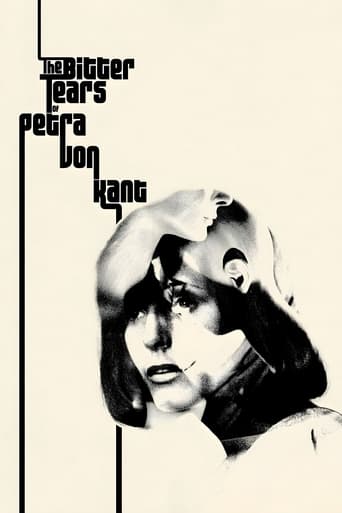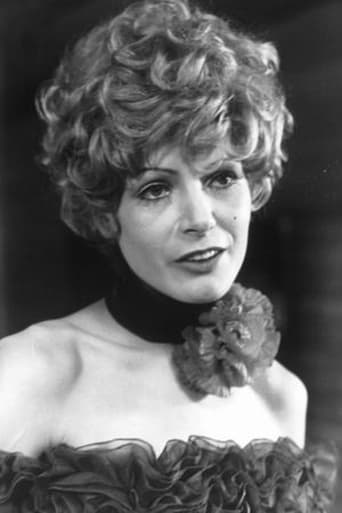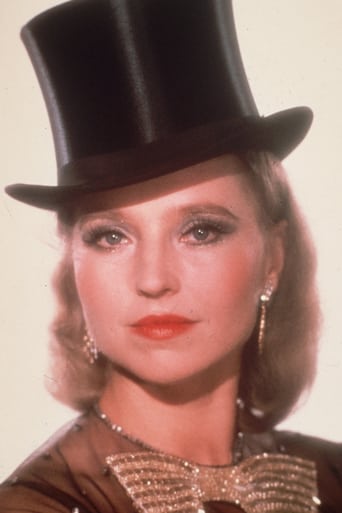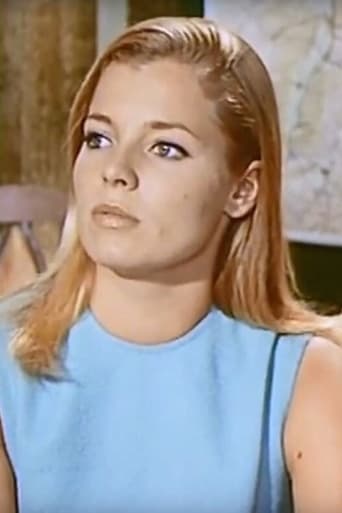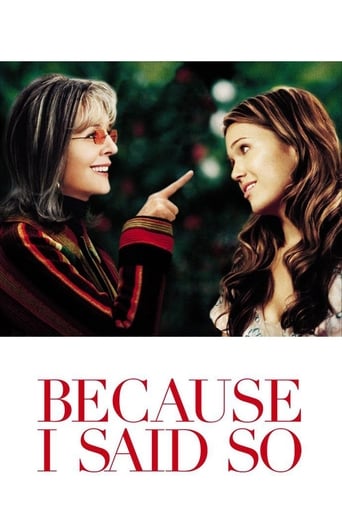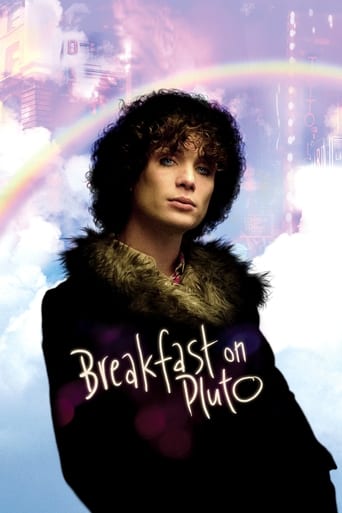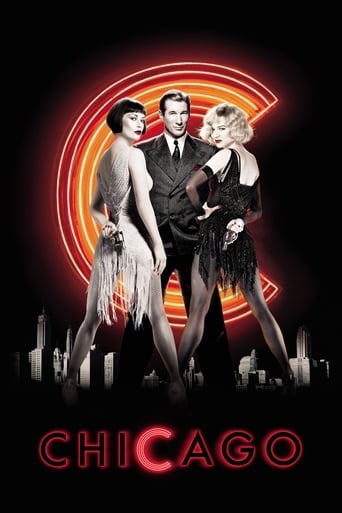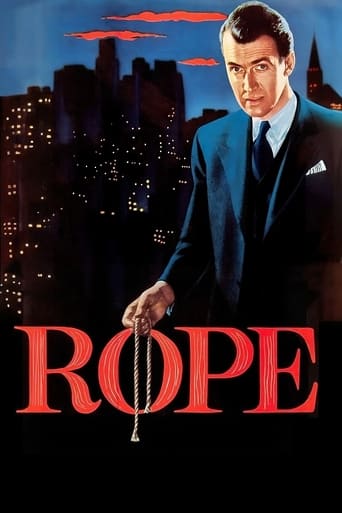The Bitter Tears of Petra von Kant (1972)
Petra von Kant is a successful fashion designer -- arrogant, caustic, and self-satisfied. She mistreats Marlene (her secretary, maid, and co-designer). Enter Karin, a 23-year-old beauty who wants to be a model. Petra falls in love with Karin and invites her to move in.
Watch Trailer
Cast


Similar titles
Reviews
hyped garbage
A waste of 90 minutes of my life
In truth, there is barely enough story here to make a film.
One of the worst ways to make a cult movie is to set out to make a cult movie.
This movie is reputedly an autobiographical fictionalization of Fassbinder's own "menage" between himself, his lover, and his secretary. While the homosexuality is retained the gender is transformed to female.Petra von Kant, is, like Fassbinder a product of upper middle class circumstances. She is artistic and ambitious. She is a rising force in the German Fashion "couture" and the movie opens with a bibulous Petra waking up late, and behaving in a superior and demanding manner towards her submissive and obedient secretary/design assistant/maid, the long suffering Marlene. Petra's selfish and narcissistic character is thus immediately established. The viewer is left in no doubt concerning her sybaritic, pampered demanding nature.The next scene features a visit from her friend the Baroness Sidonie, whom she hasn't seen in years. The talk is focused on Petra,s failed marriage and Sidonie's curiosity about the underlying reasons for its failure. Petra claims that her husband resented her success and could not chauvinistically come to terms with her financial dominance. At no time does she refer to sexual orientation and gender preference as factors.Enter the Baroness's young and beautiful friend Karin. Immediately Petra becomes interested and seductively attracted towards her. In classic bourgeois style, she flatters and tempts the impoverished Karin with her wealth and connections {"I'll make you my model"}. Karin, a heterosexual embraces bisexuality and embarks on an affair with Petra.In the background throughout the entire movie Poussin's "Midas and Bacchus" reproduced as a backdrop against an entire wall looms symbolically over the unfolding drama.We are now moved on in time. Petra is now hopelessly infatuated with Karin, who, although she is affectionate towards Petra, her heterosexuality precludes her reciprocating. What Petra desires is a grand passion, which,like a moth being drawn to a flame is then consumed by it. The requited love that Petra insists upon, remains unsatisfied. The situation comes to a head when Karin's husband returns and Karin walks out of her relationship with Petra and rejoins him.We now have the core of this tale as Petra fragments in agonistic convulsion. A fantastic sequence of humiliation and degradation, emotionally convincing, is magnificently pulled off by Margarit Carstensen who plays Petra and also by Fassbinder's tight direction. The scene takes place on a shaggy long piled white carpet,{fashionable in the 70's} a bare room and the backdrop painting. An utterly masterful and absorbing display of emotion at the edge. Phew, what an affective scene, leaving the viewer quite exhausted. After the catharsis of all the "descent into hell", Petra recovers, seemingly cured of the "mad love", and supposedly, through the pain and suffering, she now offers her long suffering slave cum assistant, a new relationship - her freedom from servitude, and from now on a partnership of equality. This political resolution was taken by this particular viewer {that is, myself} with a pinch of salt, as I find it highly optimistic on Fassbinder's part, that Petra would so easily embrace a new personaThere is very little action in this movie but the authenticity is riveting. Sure, it's an Art Movie, stagey, with the dialogue telling most of the story, but it's a great movie nevertheless.
Claustrophobic, talky and highly inventive The Bitter Tears of Petra Von Kant is a key film in the development of R.W. Fassbinder's art. According to longtime colleague Ulli Lommel, Fassbinder wrote the entire work (which also became a play and, posthumously, a modernist opera) during an 11 hour plane journey from Germany to LA. Excited by this flush of creativity, Fassbinder ordered his entourage to head straight back home and shot the entire film in a extraordinary 10 days.Set wholly within one room in the home of successful fashion designer Petra Von Kant, the film deals with the destructive love affair Petra (Margit Carstensen) begins with aspiring model Karin (Hanna Schygulla). As one of Fassbinder's early forays into the reexamination of 1950's Hollywood melodrama, the film has the tendency to polarise audiences with it's highly stylised and almost stagy approach. Even the lack of incidental music may jar with those not familiar with the director's work. Rather than using a swelling score giving cues to the emotions the audience is meant to feel, Fassbinder opts instead for selective natural sound (a typewriter endlessly clacking away in the background during an important scene, for instance) and records from Von Kant's (i.e. Fassbinder's) record collection. Without this trapping, we watch Petra's self-destruction with a certain ambiguity and a more considered response is elicited from the viewer. More space is also given to the magnificent dialogue and inventive camera-work (shot in long, winding takes) which allows the fine ensemble cast to to plunder the depths of emotional despair, all the while dressed in Von Kant's wonderfully outrageous designs.This is all the more fascinating when read as a thinly veiled confession of Fassbinder's domineering ways with those in his inner circle. As also pointed out by Lommel, the film's exclusively female characters were actually all based on men. Fassbinder, however, mostly preferred to work with women as he felt they were freer to express extreme states of emotional truth and more open to the requirements of high melodrama. As a primer for the great director's work, The Bitter Tears of Petra Von Kant is an excellent example of Fassbinder's over-riding theme: how the hunter can quickly become the victim and that the universality of desire and need within all human relationships is a constant, regardless of status, sexuality or age.
Some abstract painters who don't have the patience and dedication to learn how to paint correctly and resort to modern painting. And try to prove it's a better way to express themselves.The performance and directing have nothing to be desired. I can't relate to Petra, who whines and moans for no particular reason.It leaves a bitter taste in my mouth.
This film is an elegantly constructed classical tragedy that explores the erotics of cruelty and the manipulation of sexual power. Deeply perverse, its portrayal of the complexity of sexual desire is an inversion of all Hollywood romantic tropes, which are thus exposed as comparatively frivolous and dishonest. It is a lesbian love story set in the fashion industry. Though some may find it slow paced, the rest of us will appreciate the meticulously choreography, the stunning cinematography, and the precision with which the actresses mimic the mimicking of womanhood.While "The Bitter Tears" is heart-wrenching, devastating tragedy, a greater intellectual high is hard to find in movies or elsewhere. Among the very best films of Fassbinder's career, this movie demonstrates (yet again) that Fassbinder is one of the truly great artists of our time.

